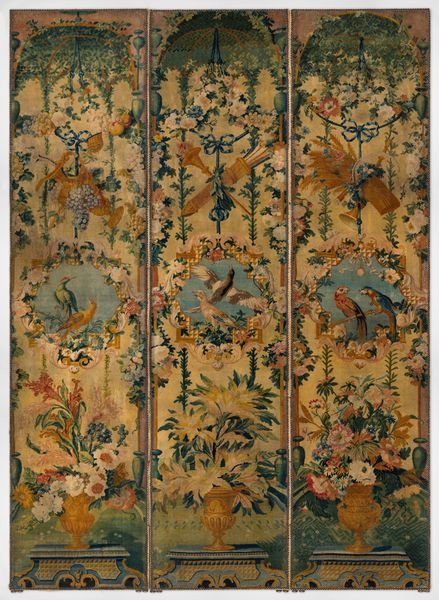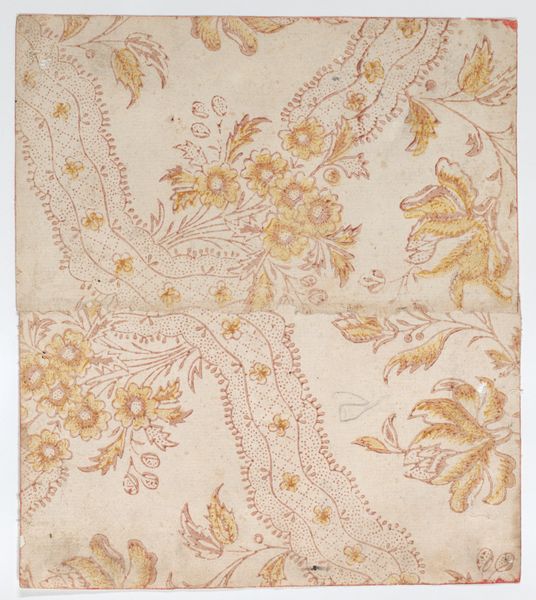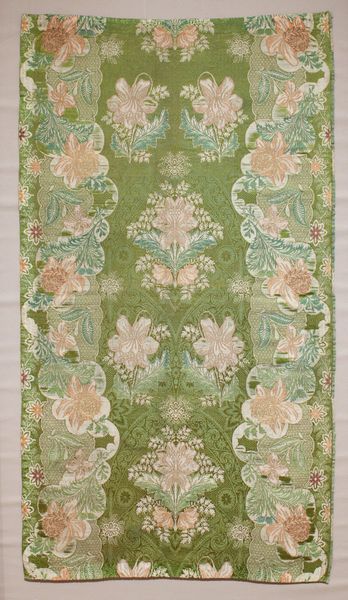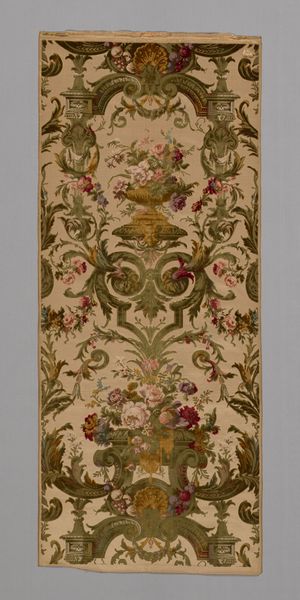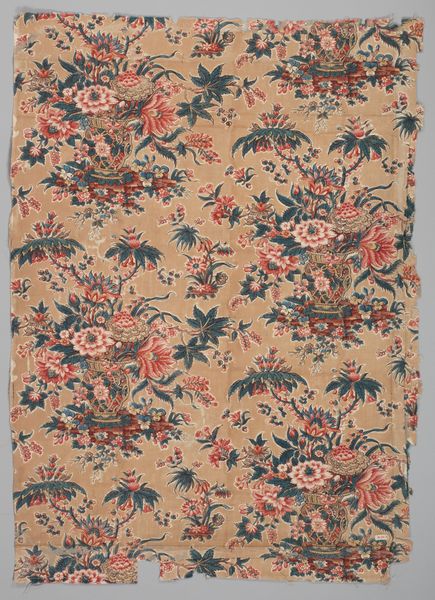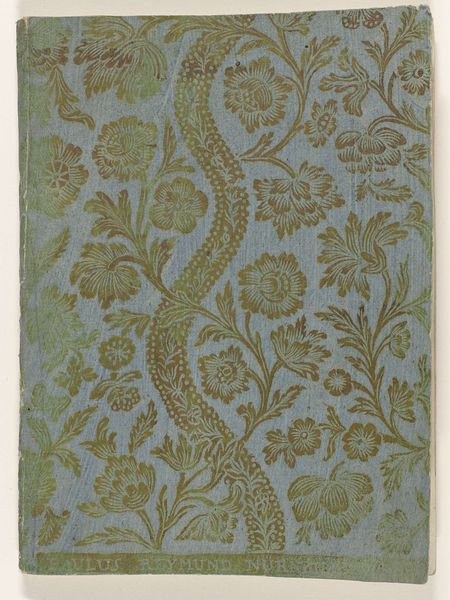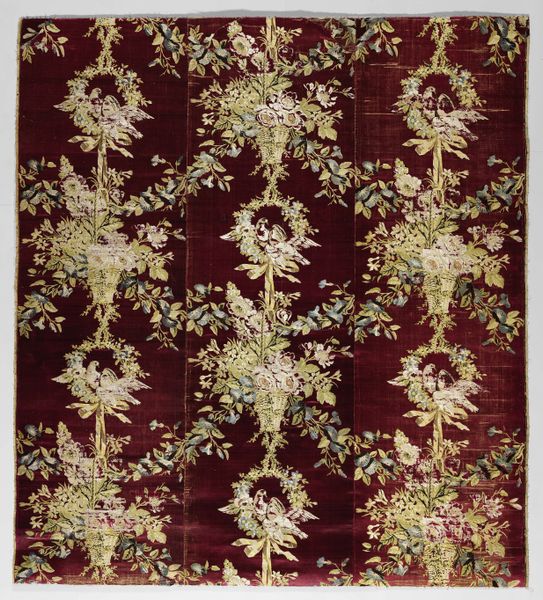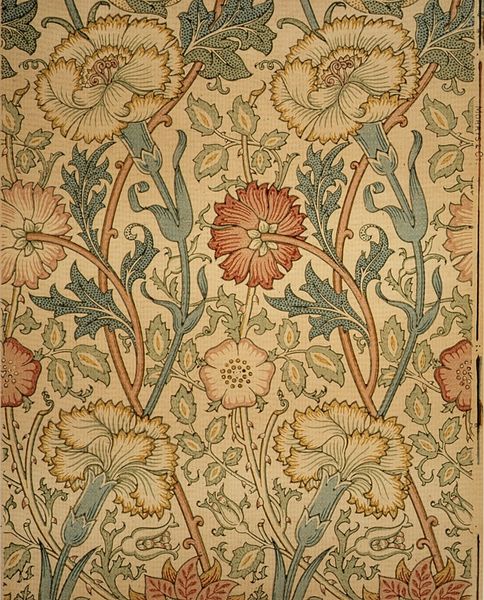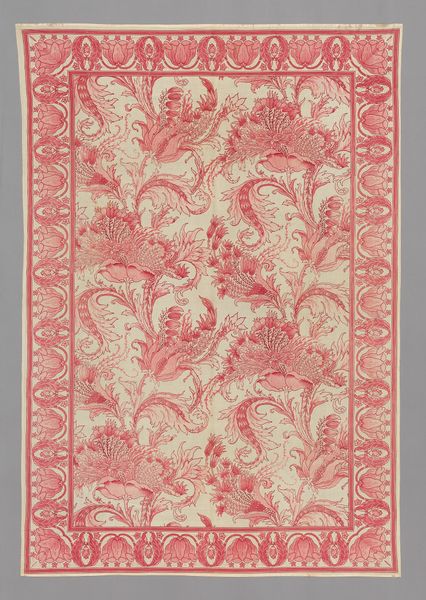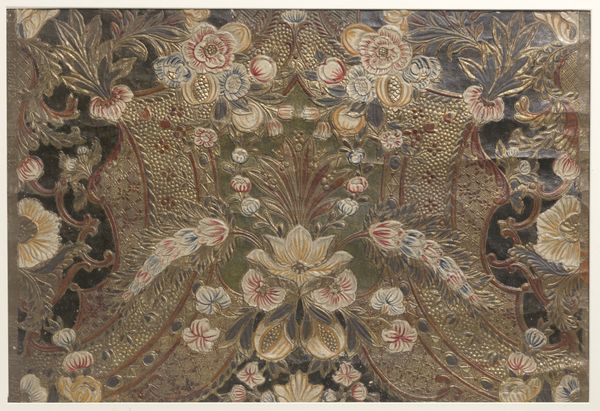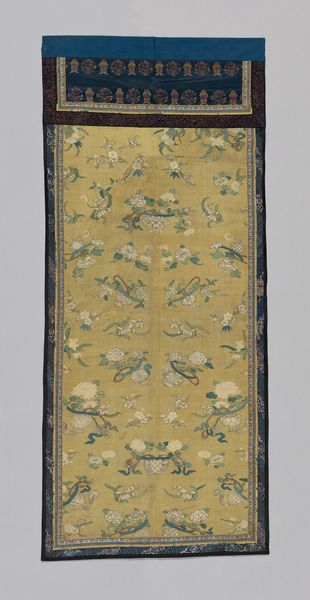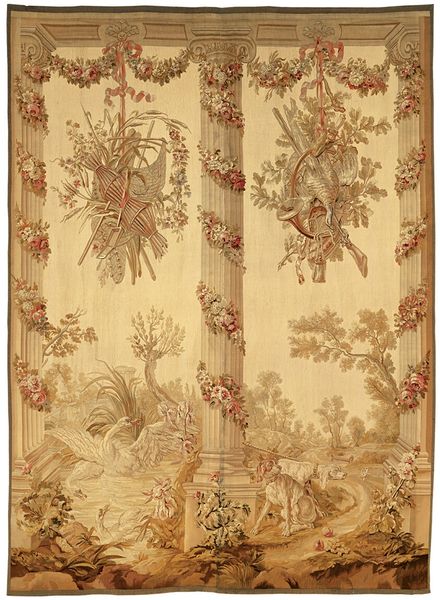
silk, textile
#
natural stone pattern
#
wood texture
#
naturalistic pattern
#
silk
#
textile
#
geometric pattern
#
pattern background
#
tile art
#
organic pattern
#
france
#
wooden texture
#
layered pattern
#
organic texture
Dimensions: 34 1/2 x 21 in. (87.63 x 53.34 cm)
Copyright: Public Domain
Curator: What an interesting piece, a French silk textile panel dating back to the 18th century. It’s currently held here at the Minneapolis Institute of Art. Editor: It's strangely mesmerizing. There's an overwhelming sense of faded grandeur, like looking at a ghost of its former vibrancy. The pattern feels both opulent and slightly unsettling. Curator: Opulence is definitely a key aspect here. Silk, particularly in the 18th century, represented status and wealth. This panel would likely have been used for furnishings in a wealthy household, perhaps as wall covering or upholstery. Imagine the social lives lived near these walls. Editor: Considering its original use, I am immediately thinking of labor. Silk production was an intensive, highly skilled craft. Do we know anything about the specific workshops that produced such textiles at that time and place? Were these individual artists or mass-produced fabrics, relatively speaking? Curator: Those workshops operated under strict guild systems, emphasizing quality and craftsmanship, certainly affecting production. Silk weaving centres, especially in Lyon, France, held monopolies controlling supply, dictating designs, and regulating labour practices. These rules protected the art as well as its purveyors. The pattern also offers interesting insights into contemporary aesthetics. Editor: Exactly, looking beyond surface elegance: how would you contextualize the imagery? The fantastical flowers and curving designs almost look alien when extracted from their immediate use as wallpaper, and are definitely divorced from "nature," yet evoking a sense of it. Curator: You're right, it isn't a naturalistic depiction of plants, but rather an interpretation, influenced by the rococo style of the time which thrived on asymmetry, and ornamental detail. The imagery aimed to evoke nature in an artificial, controlled way, mirroring the desire of the aristocracy to shape their environment and by extension, their society. Editor: That kind of ties to my initial thoughts, the panel stands as an artifact. This is such a lovely reminder of how intertwined materials, social class, labour and artistic movements are. Curator: Absolutely, viewing art as a convergence of historical forces deepens our understanding. Next time you see one of these works, I recommend that you consider both production AND perception, and this "Bizarre Silk Panel" certainly sets one thinking about that interrelationship.
Comments
minneapolisinstituteofart almost 2 years ago
⋮
European silks of the late seventeenth and early eighteenth century often display unusual motifs and dramatic compositions resulting from the interchange between East and West. The successful voyages of the East India trading companies opened up new horizons for European design, as cargoes of porcelain, lacquer work and textiles reached the continent and stimulated the imaginations of artists. These so-called Bizarre silks are characterized by elongated diagonal and exotic, abstract elements, juxtaposed in overlapping patterns and spiraling curves, often enhanced by gold and metallic threads. At this time France took over the lead in the silk industry from Italy, and began to set the tone in fashion. Many bizarre silks were made into clothing, such as men's waistcoats and women's dresses.
Join the conversation
Join millions of artists and users on Artera today and experience the ultimate creative platform.
